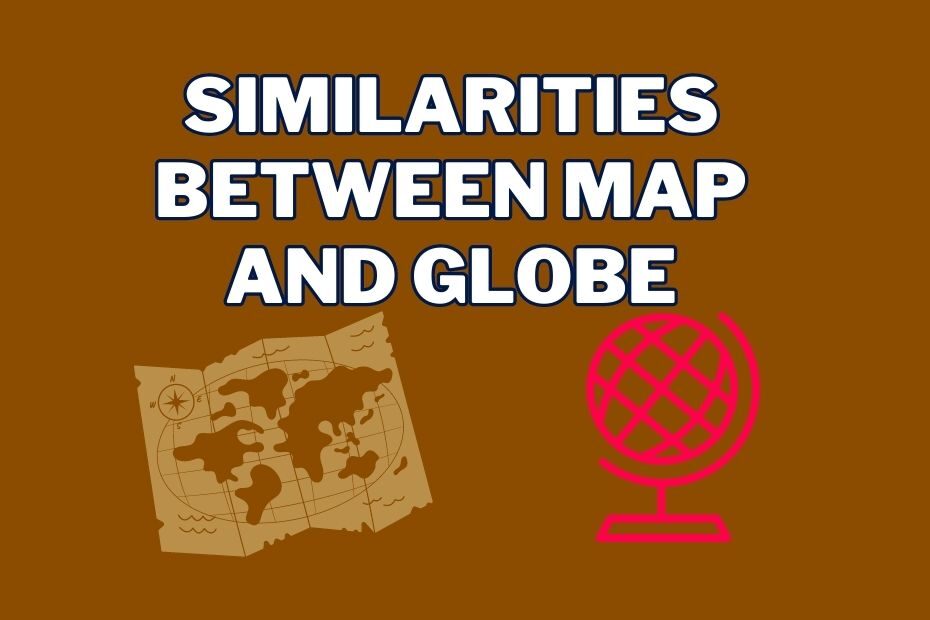Geography is a vast subject that requires a clear understanding of various concepts, including maps and globes. Both of these are essential tools for representing the Earth’s surface, enabling us to identify different regions, landmarks, and geographical features. However, many people often get confused between maps and globes and wonder about their similarities. In this article, we’ll explore the similarities between map and globe and help you understand their basics.
Maps and globes share several similarities, including the representation of the Earth’s surface, the use of coordinates, the representation of the equator and the prime meridian, the representation of hemispheres, and the use of projection.
Introduction
Maps and globes are both representations of the Earth’s surface, which allows us to study and understand the planet better. They provide a comprehensive view of the world, including oceans, continents, countries, and other geographical features. While maps are two-dimensional representations, globes are three-dimensional spheres, providing a more accurate depiction of the Earth’s surface.
7 Similarities Between Map and Globe
Despite their differences, maps and globes share several similarities, including:
1. Representation of the Earth’s Surface
Both maps and globes are tools that represent the Earth’s surface. They provide a visual representation of the physical features of the planet, including oceans, mountains, rivers, and continents. Maps are two-dimensional, while globes are three-dimensional, but they both offer a comprehensive view of the Earth’s surface.
2. Use of Coordinates
Another similarity between maps and globes is the use of coordinates. Both tools use a system of latitude and longitude to identify specific locations on the Earth’s surface. These coordinates allow us to pinpoint any location on the planet and navigate through different places.
3. Representation of the Equator and the Prime Meridian
Maps and globes both represent the equator and the prime meridian. The equator is an imaginary line that divides the Earth into the Northern and Southern Hemispheres, while the prime meridian divides the Earth into the Eastern and Western Hemispheres. Both tools provide a visual representation of these lines, making it easy to understand how they divide the planet.
4. Representation of Hemispheres
Maps and globes both represent the hemispheres, which are the four divisions of the Earth’s surface created by the equator and the prime meridian. These hemispheres include the Northern Hemisphere, Southern Hemisphere, Eastern Hemisphere, and Western Hemisphere. Both tools provide a visual representation of these hemispheres, making it easy to understand the different regions of the planet.
5. Use of Projection
Both maps and globes use projection to represent the Earth’s surface. Projection is a technique used to represent a three-dimensional surface on a two-dimensional plane. Maps use different projection methods to represent the Earth’s surface, such as the Mercator projection or the Robinson projection. Globes, on the other hand, use a physical representation of the Earth’s surface, so they do not require any projection method.
6. Use in Navigation
Both maps and globes are important tools for navigation. They help us identify different locations and navigate through different places. Maps are commonly used for navigation, especially when driving or traveling, while globes are often used in educational settings to help students understand the different regions of the planet.
7. Importance in Geography
Finally, both maps and globes are important tools in the study of geography. They help us understand the Earth’s physical features, identify different regions, and navigate through different places. Maps and globes are often used in educational settings to teach students about geography, and they are also used in professional settings, such as in cartography and navigation.
Conclusion
In conclusion, maps and globes are both essential tools for studying the Earth’s surface, and they share several similarities. They represent the Earth’s physical features, use coordinates to identify specific locations, depict the equator and the prime meridian, and represent the hemispheres. By understanding their similarities, we can better appreciate the role they play in studying geography.
FAQs: Similarities Between Map and Globe
Why are maps and globes important?
Maps and globes are important tools for studying geography, helping us understand the Earth’s physical features, identify different regions, and navigate through different places.
Which is more accurate, a map or a globe?
A globe is more accurate than a map as it provides a three-dimensional representation of the Earth’s surface, showing the physical features of the planet in their actual shape and size.
